News
Spooky History: The Origins of Halloween Superstitions and Traditions
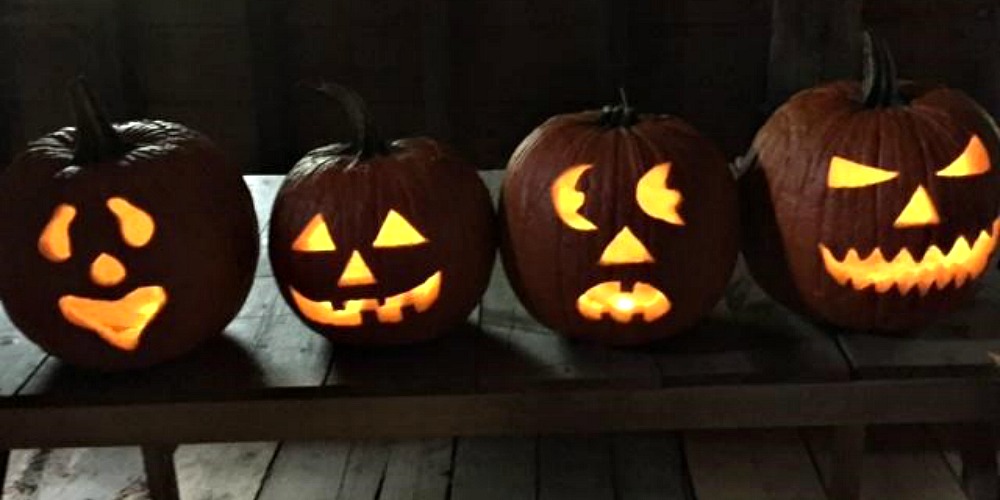
Halloween night conjures a multitude of images from trick or treaters to black cats to crone-like witches riding their brooms across a full moon. We celebrate the holiday every year, putting up decorations and dressing up for parties, but unlike holidays like Christmas and Thanksgiving and the 4th of July, most people don’t know why or where these traditions came from.
A few years ago, I wrote a four part series on the history of Halloween where I broke down the evolution of the holiday from its earliest incarnation as Samhain to the modern mischief night. Unfortunately, during that series, I didn’t have a lot of time to spend on individual superstitions and traditions so this year, I decided it was time for a deep dive into some of the particular and peculiar trappings of our favorite spooky holiday!
Black Cats
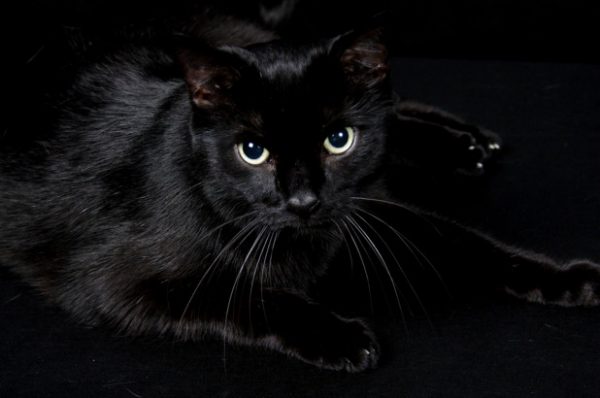
Everyone knows a black cat is bad luck, right? I actually know a woman who will completely change her route, throwing her GPS into a spin, if a black cat should cross her path while driving.
Ridiculous? Yes. Entertaining? Without a doubt!
But why and how did the black cat get its reputation?
Well, first of all, we have to recognize that this isn’t the case worldwide. In parts of Scotland, a black cat is thought to bring prosperity to a home and in early Celtic stories, if a woman had a black cat, it was thought that she would have many lovers in her life.
Pirate lore held that if a black cat walked toward you, it would bring good luck but if it walked away from you, it took your luck from you. It was also believed by some sailors that if a cat walked onto a ship and then back off, the ship was doomed to sink!
In other parts of Europe, however, it was believed that cats in general and black cats especially were witch familiars, and it was not unheard of during various witch trials to see a cat killed alongside its owner. Even more horrifying, however, was the tradition of cat-burning in some European countries during the medieval period.
Cats would be gathered up into boxes or nets and strung up over great bonfires killing them in droves. Though it is up for some scholarly debate, some think that these practices actually paved the way for the black plague, which was spread by rats.
In America, the Puritans and Pilgrims brought their black superstitions with them, attributing the creatures to Satan and those who worship him.
Some of that mystique eventually fell away, but the belief that black cats bring bad luck endured and is still alive and well to this day as evidenced by my friend and her driving habits.
With their association with witchcraft, it’s no wonder really that they became a part of Halloween decorations and the like. After all, Halloween itself has suffered from a spate of bad press over the centuries.
Jack-O-Lanterns
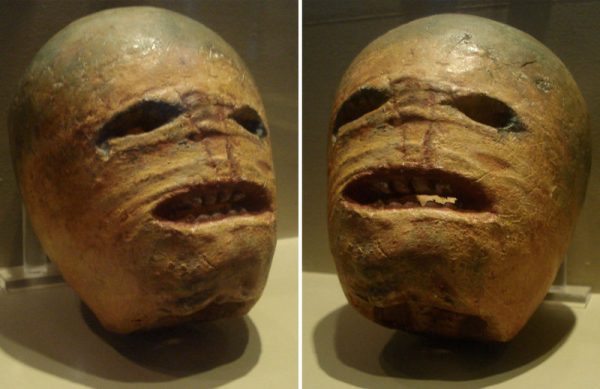
It has long been thought that on Halloween night, the veil between this world and the next thins so much that spirits can pass between them.
There were whole traditions bound to the idea of inviting the spirits of loved ones to the home on Halloween or Samhain including lighting candles and leaving them in the windows to welcome them home.
The Jack-O-Lantern, however, was borne of a need to protect the home from those dark spirits that might also pass through the thinning veil. In ancient Ireland where the tradition began, however, it wasn’t a pumpkin.
Pumpkins were not native to Ireland you see, but they did have rather large turnips, gourds and even potatoes or beets. They would carve hideous faces into their chosen vessel and would set a hot coal inside to give off a hideous glow in the hopes that they would frighten away any dark spirits that might try to enter the home.
Naturally, stories sprang up about the practice’s origin and the tale of Jack O’Lantern, a man who was too bad to go to heaven but had secured a promise from the devil that he would not allow him inside. You can read one version of that story here.
When the Irish came to America, they brought the tradition with them, and eventually began to use the native pumpkins for their purpose. The tradition spread and today it’s just not Halloween without carving a pumpkin or two to set on the front porch.
Witches and Broomsticks
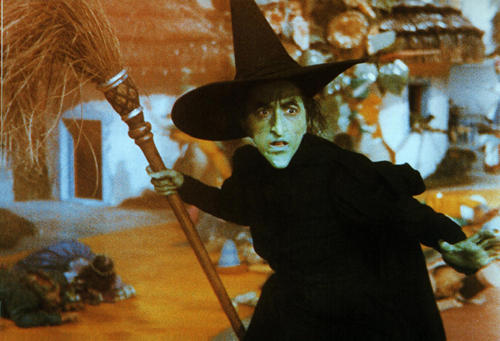
Honestly, this is way too deep a subject to fully cover in such a short space. Suffice it to say that the ties between Halloween and Witches are long and layered and varied depending upon what part of the world you live in and where your beliefs lie.
Samhain, which evolved into Halloween, is an ancient celebration of the end of the harvest season. Great bonfires were lit and whole villages would gather together to celebrate as the lightest part of the year gave way to the darkness, for this was balance and not something to be feared.
As new religions spread, however, those who practiced the old ways were looked upon with suspicion and their practices were demonized by those who craved power more than anything. They condemned those who held to the ancient faiths and saw the bonfires as gatherings to worship Satan, which is silly because most of those villagers had never heard of Satan before the “missionaries” arrived.
Rumor and gossip spread among the new faith that it was witches in league with the devil who met at these bonfires. What’s more, they flew to them on their broomsticks!
The broom, of course, was used by any number of women to clean the house, and for those poor women who needed help walking from place to place, it was not uncommon for them to use their household implement as a walking stick.
The image of the terrifying old crone, once a venerable Elder trusted for her wisdom and ability to heal those in need, soon followed and for better or worse has lasted to this very day.
Bats
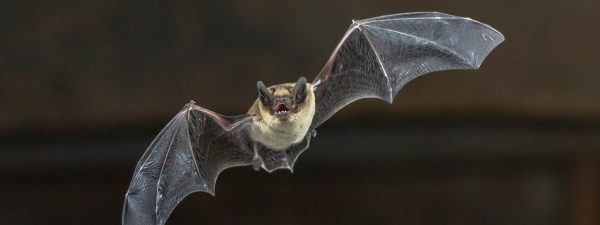
Perhaps the simplest and most logical connection to Samhain and Halloween are found in bats, yet another creature with a bad reputation.
Bats have many associations with magic and ancient belief systems. They sleep, hidden away in caves and the sheltering limbs of great trees, emerging from Mother Earth herself to hunt at night. They would later be tied to another creature of the night with vampires, most notably by Bram Stoker in his novel, Dracula.
As for their connection to Halloween, one only has to remember the bonfires of those ancient Samhain festivals.
As anyone knows who has ever built a campfire in the woods, it doesn’t take long before every insect in a three mile radius is drawn to its light. Now imagine that fire is huge!
Naturally swarms of insects would accompany the fires turning the festival into an all you can eat buffet for bats who swirled through the night eating their fill.
Again, the symbolism stuck, and today, it’s not uncommon in the least to find bat decorations hanging from ceilings and front porches as part of seasonal festivities.
Bobbing for Apples
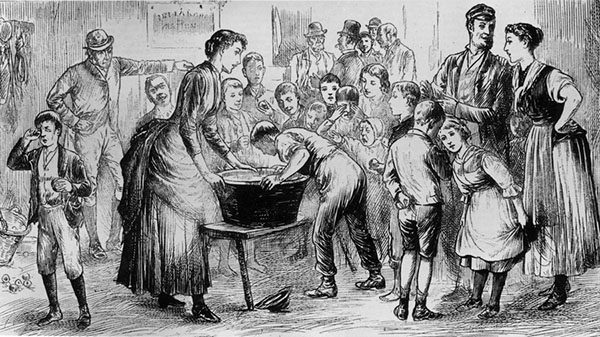
Bobbing for apples was introduced to the Celts after the Romans invaded Britain. They brought apple trees with them and introduced the game.
Apples were placed in tubs of water or hung from string. Young, unmarried men and women would attempt to bite into the apples and the first one who did was thought to be the next who would marry.
The tradition grew, spreading across the British isles as a popular game for what would become Halloween. It was also thought that a maiden who took home the apple she captured and put it under her pillow when she went to sleep would dream of the man she would marry.
It was one of many forms of divination that were carried out on the auspicious and magical night.
Today, the tradition holds and you’ll find apple bobbing around the world.
Trick or Treating
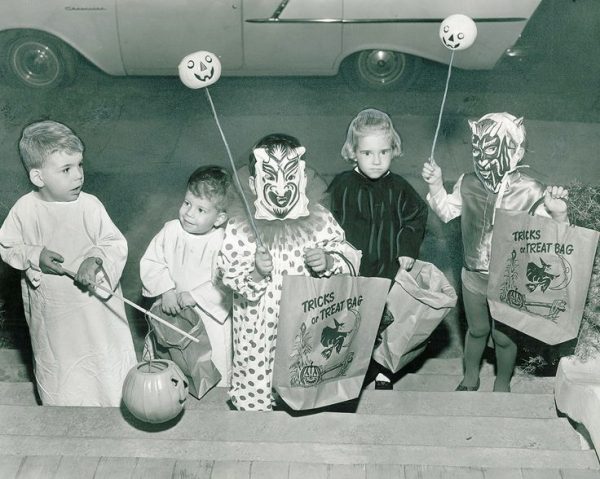
The tradition of wearing costumes on what would become Halloween began long ago, again with the Celts. Remember the belief of spirits roaming the earth on this night? Well, the bad ones just might try to take you back with them, and so it was smart to hide.
The best way to do this, they figured was to dress up as a monster yourself. The dark spirits, thinking you’re one of them, would simply pass you by. The tradition continued despite interference by invading forces with different faiths, and in the Middle Ages the practice of “guising” or “disguising” expanded.
Children and sometimes adults who were poor and hungry would dress in costumes and go door to door begging for food from those who could spare it often in exchange for prayers or songs sung to and for the dead in a tradition called “Souling.”
The tradition died out and was reborn several times before the practice of “trick or treating” came to be in the early 20th century. On Halloween night, youngsters would go out dressed in costumes begging for treats and those who didn’t have anything to give, or were too cantankerous to do so, might find their windows soaped or their wagon wheels missing by the following morning!
These are just a few examples of Halloween traditions and their origins. If you’d like more information on the history of Halloween, check out my series on the holiday starting here.
'Civil War' Review: Is It Worth Watching?
Follow our new YouTube channel "Mysteries and Movies" here.

Movies
‘Evil Dead’ Film Franchise Getting TWO New Installments
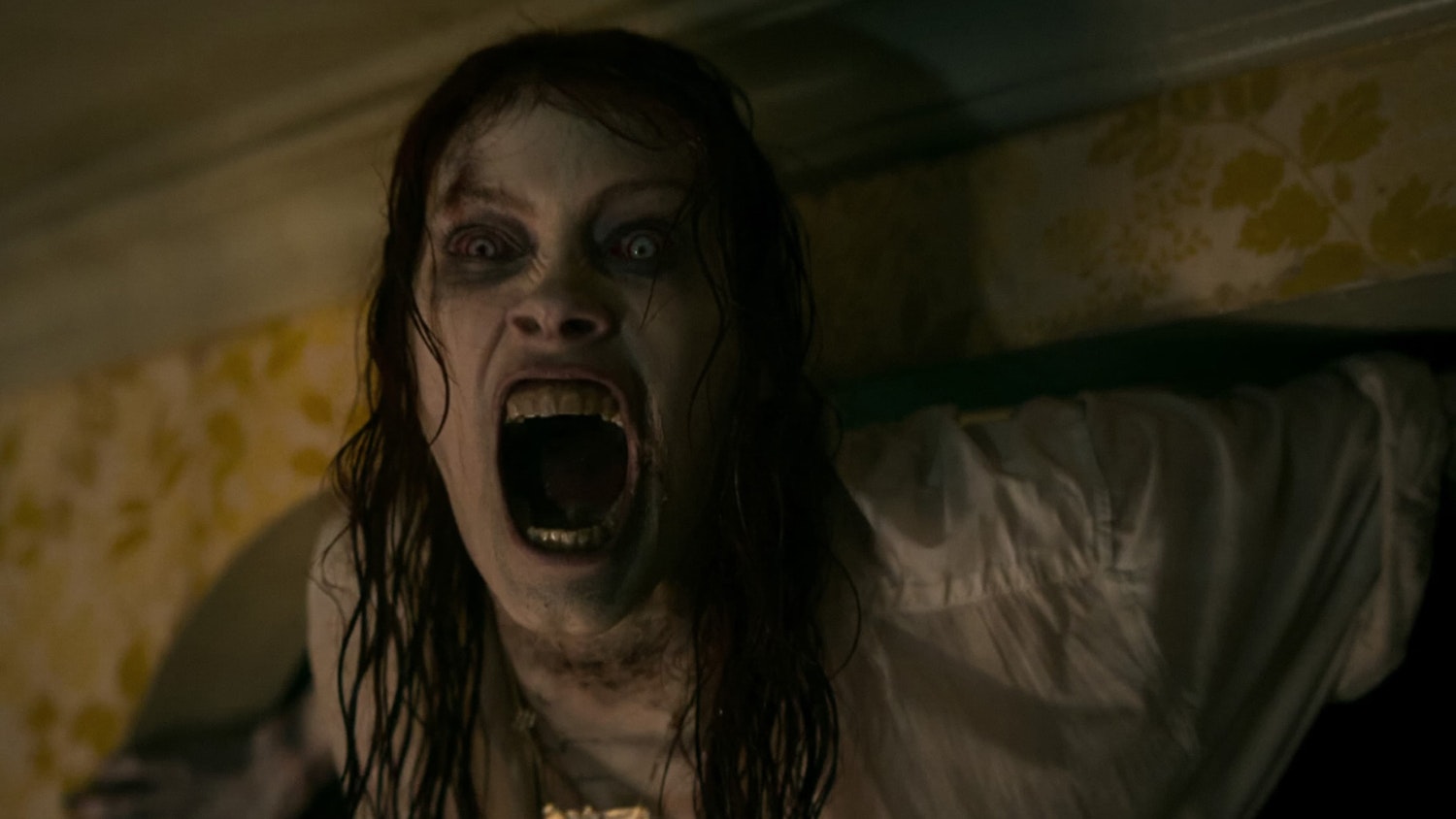
It was a risk for Fede Alvarez to reboot Sam Raimi’s horror classic The Evil Dead in 2013, but that risk paid off and so did its spiritual sequel Evil Dead Rise in 2023. Now Deadline is reporting that the series is getting, not one, but two fresh entries.
We already knew about the Sébastien Vaniček upcoming film that delves into the Deadite universe and should be a proper sequel to the latest film, but we are broadsided that Francis Galluppi and Ghost House Pictures are doing a one-off project set in Raimi’s universe based off of an idea that Galluppi pitched to Raimi himself. That concept is being kept under wraps.

“Francis Galluppi is a storyteller who knows when to keep us waiting in simmering tension and when to hit us with explosive violence,” Raimi told Deadline. “He is a director that shows uncommon control in his feature debut.”
That feature is titled The Last Stop In Yuma County which will release theatrically in the United States on May 4. It follows a traveling salesman, “stranded at a rural Arizona rest stop,” and “is thrust into a dire hostage situation by the arrival of two bank robbers with no qualms about using cruelty-or cold, hard steel-to protect their bloodstained fortune.”
Galluppi is an award-winning sci-fi/horror shorts director whose acclaimed works include High Desert Hell and The Gemini Project. You can view the full edit of High Desert Hell and the teaser for Gemini below:
'Civil War' Review: Is It Worth Watching?
Follow our new YouTube channel "Mysteries and Movies" here.
Movies
‘Invisible Man 2’ Is “Closer Than Its Ever Been” to Happening

Elisabeth Moss in a very well-thought-out statement said in an interview for Happy Sad Confused that even though there have been some logistical issues for doing Invisible Man 2 there is hope on the horizon.
Podcast host Josh Horowitz asked about the follow-up and if Moss and director Leigh Whannell were any closer to cracking a solution to getting it made. “We are closer than we have ever been to cracking it,” said Moss with a huge grin. You can see her reaction at the 35:52 mark in the below video.
Whannell is currently in New Zealand filming another monster movie for Universal, Wolf Man, which might be the spark that ignites Universal’s troubled Dark Universe concept which hasn’t gained any momentum since Tom Cruise’s failed attempt at resurrecting The Mummy.
Also, in the podcast video, Moss says she is not in the Wolf Man film so any speculation that it’s a crossover project is left in the air.
Meanwhile, Universal Studios is in the middle of constructing a year-round haunt house in Las Vegas which will showcase some of their classic cinematic monsters. Depending on attendance, this could be the boost the studio needs to get audiences interested in their creature IPs once more and to get more films made based on them.
The Las Vegas project is set to open in 2025, coinciding with their new proper theme park in Orlando called Epic Universe.
'Civil War' Review: Is It Worth Watching?
Follow our new YouTube channel "Mysteries and Movies" here.
News
Jake Gyllenhaal’s Thriller ‘Presumed Innocent’ Series Gets Early Release Date

Jake Gyllenhaal’s limited series Presumed Innocent is dropping on AppleTV+ on June 12 instead of June 14 as originally planned. The star, whose Road House reboot has brought mixed reviews on Amazon Prime, is embracing the small screen for the first time since his appearance on Homicide: Life on the Street in 1994.

Presumed Innocent is being produced by David E. Kelley, J.J. Abrams’ Bad Robot, and Warner Bros. It is an adaptation of Scott Turow’s 1990 film in which Harrison Ford plays a lawyer doing double duty as an investigator looking for the murderer of his colleague.
These types of sexy thrillers were popular in the ’90s and usually contained twist endings. Here’s the trailer for the original:
According to Deadline, Presumed Innocent doesn’t stray far from the source material: “…the Presumed Innocent series will explore obsession, sex, politics and the power and limits of love as the accused fights to hold his family and marriage together.”
Up next for Gyllenhaal is the Guy Ritchie action movie titled In the Grey scheduled for release in January 2025.
Presumed Innocent is an eight-episode limited series set to stream on AppleTV+ starting June 12.
'Civil War' Review: Is It Worth Watching?
Follow our new YouTube channel "Mysteries and Movies" here.
-

 News6 days ago
News6 days agoOriginal Blair Witch Cast Ask Lionsgate for Retroactive Residuals in Light of New Film
-

 News4 days ago
News4 days agoPerhaps the Scariest, Most Disturbing Series of The Year
-

 Movies5 days ago
Movies5 days agoNew F-Bomb Laden ‘Deadpool & Wolverine’ Trailer: Bloody Buddy Movie
-
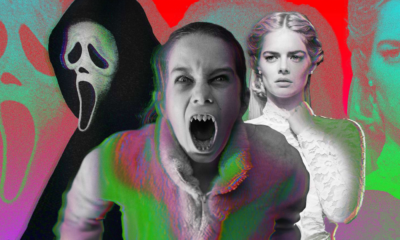
 Lists4 days ago
Lists4 days agoThrills and Chills: Ranking ‘Radio Silence’ Films from Bloody Brilliant to Just Bloody
-

 News5 days ago
News5 days agoRussell Crowe To Star in Another Exorcism Movie & It’s Not a Sequel
-

 Movies5 days ago
Movies5 days ago‘Founders Day’ Finally Getting a Digital Release
-
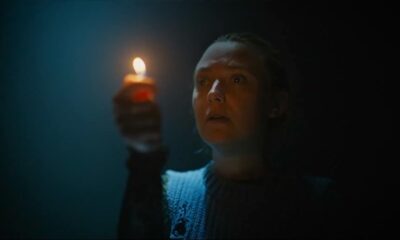
 Movies5 days ago
Movies5 days agoNew ‘The Watchers’ Trailer Adds More to the Mystery
-
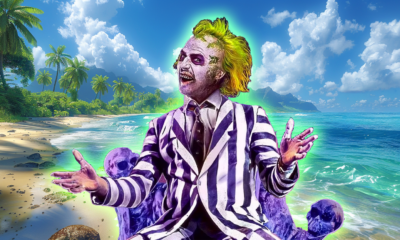
 Movies4 days ago
Movies4 days agoThe Original ‘Beetlejuice’ Sequel Had an Interesting Location


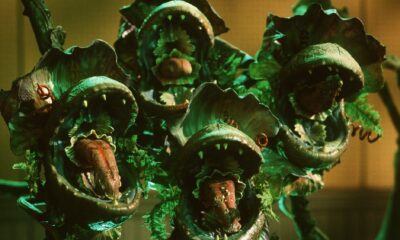

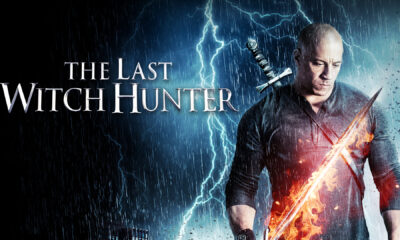
























You must be logged in to post a comment Login